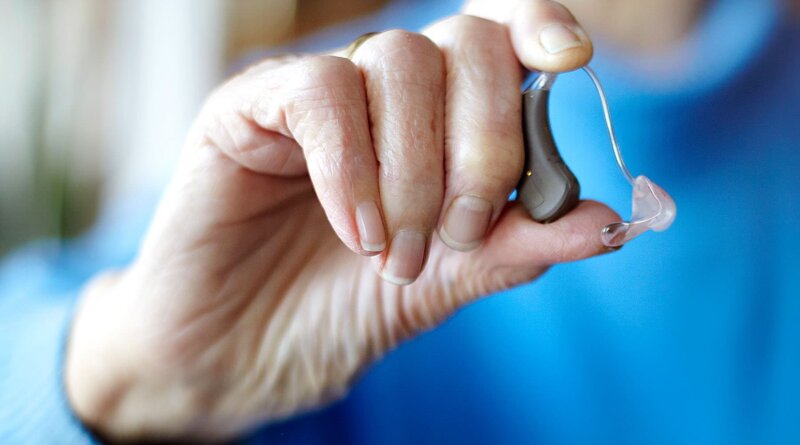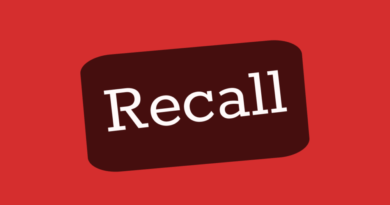Over-the-Counter Hearing Aids: Research, Then Shop
Oct. 21, 2022 – This past Monday was the long-anticipated debut of over-the-counter hearing aids, the day they could be sold at stores, pharmacies, and online after the FDA signed off on these less expensive options that require no health care professional’s input.
What could be simpler? Just pick up that hearing aid you’ve been needing on your next Walmart run.
Several devices are now available, but the party isn’t in full swing yet, it appears. A quick spot check on Wednesday and Thursday at a Best Buy, CVS, Walmart, and Walgreens about 10 miles from downtown Los Angeles found no OTC hearing aid devices on the shelves, with store personnel suggesting a visit to their websites or to check other, larger stores. Many of the prices, listed online, are higher than earlier estimates of $300 to $500. And reading and understanding the product information can take some education.
Even so, hearing loss professionals – and probably countless spouses and friends tired of hearing “Huh?” – applaud the move, noting that this more affordable hearing help is sorely needed by many. About 37.5 million American adults report some trouble hearing, but only about one-fifth of people who could benefit from a hearing aid use one, the FDA says. Expense is a big reason, although the stigma of needing a hearing aid can play in, too. And device makers say by month’s end, more models will be in stores.
Before shopping, here’s what to know and where to turn for help.
Hearing Experts On Board
Hearing experts, including audiologists and doctors who are hearing specialists (ENTs or otolaryngologists), favor the option of OTC devices, if people don’t misjudge their hearing loss.
“I think it’s great to have multiple pathways [to treat hearing loss],” says Catherine Palmer, PhD, director of audiology at the University of Pittsburgh Medical Center and chair of the American Academy of Audiology OTC Resources Task Force. “This is going to be a positive for some.”
Who Could Be Helped?
OTC hearing aids are not for severe hearing loss, and they aren’t meant for children. They work best and are meant for adults with mild to moderate hearing loss.
“We know people aren’t accurate in judging their own hearing loss,” Palmer says.
o decide how extreme your hearing loss is, experts say those with mild to moderate hearing loss have trouble understanding conversation when in a group, in a place with background noise, or when they can’t see who’s talking. They may need to turn up the television or radio loud — at a high enough volume that other people notice it’s too loud. They may have trouble talking on the phone, and they may often ask others to repeat what they said.
But you need a hearing professional if you have trouble hearing in a quiet environment or can’t hear loud sounds such as cars or power tools.
Should you try those online hearing tests first? (Google “online hearing tests” and you get 241 million results.) Some experts say it can’t hurt, but others say they are unreliable and to get a test from a professional.
A few other red flags: If you have ear pain, pus, or blood coming from the ear, excess earwax, sudden hearing loss, or loss in one ear only, see a hearing professional.
“You have to make sure there isn’t a medical cause for your hearing loss,” says Douglas Backous, MD, a neurotologist at Puget Sound ENT Proliance Surgeons in Seattle and president-elect of the American Academy of Otolaryngology – Head and Neck Surgery.
OTC Hearing Aid Options
Some of the over-the-counter hearing aids are “self-fitting,” requiring an app or accessory that develops a program based on your responses to some signals; others have preset programs, a simpler option, and users can choose the best or switch back and forth between the programs.
Models include behind-the-ear, in-the-ear, and in-the-canal, depending on preference. Those who wear glasses might not prefer the behind-the-ear model, experts say. Those who want it as inconspicuous as possible may prefer in-the-canal.
Among the many OTC devices:
Costs
The OTC devices are expected to cost about $200 to $1,000, compared to $5,000 and higher for prescription devices, according to the Consumer Healthcare Products Association, which counts device makers among its members.
OTC devices are unlikely to be covered by insurance, says Palmer, noting that the hearing industry is still fighting for more comprehensive coverage of prescription hearing aids.
More Smart Shopping:
Check the return policy for any device, says Anita Brikman, executive director of the Consumer Healthcare Products Association Educational Foundation, a nonprofit group. It should be listed on the labeling. She and others recommend at least 30 days. Some device makers offer much longer.
It may take time to get used to the device, and adjustments may be needed.
Check to see if companies offer more support, Brikman says, such as online help or a toll-free number, and check the hours they can be reached.
Several organizations offer online information about OTC hearing aids, including:
Buying online doesn’t rule out the need for an audiologist or ENT doctor. If an OTC device isn’t working properly, experts suggest taking it to an audiologist and asking for an adjustment. “Before you give up, go get a formal evaluation,” Backous says.
And even though it isn’t required before getting an OTC device, “It is still recommended that people get some sort of hearing test,” Brikman says. Insurance may cover the cost of the test.
Improved Hearing, Better Health
Hearing loss is linked with many ill effects on health, including less socializing because you miss out on conversations. Hearing loss can also boost the risk of falls.
But it’s also been linked with an increased risk of dementia. Recent research has found it is one of the top risk factors for dementia — and it can be changed.
What Aren’t OTC Hearing Aids
Googling “over the counter hearing aids” brings up a variety of devices, including personal sound amplification products or PSAPs. These are meant not for hearing loss, but to help boost the ability to hear certain sounds in certain situations, such as while bird-watching.
“These are regulated as consumer electronics, but not for hearing loss,” Brikman says.
Deciphering the FDA Terms, Device Labels
The FDA regulates OTC hearing aids as medical devices and requires OTC hearing aid makers to have a maximum output or volume on the devices to prevent injuries from boosting the sound too much. Devices must also have distortion control limits, noise limits, and limits on how quickly they process, amplify, and relay a sound. There are requirements on the range of frequencies and the insertion depth of the device.
According to an FDA spokesperson, OTC hearing aids makers must register their facilities with the FDA, list their devices with the FDA, and have clearance or approval, as appropriate for the device type .
The new hearing aid category has been in the works since 2017, when the Over-the-Counter Hearing Aid Act of 2017 was passed as a rider on the FDA Reauthorization Act of 2017. In July, President Joe Biden issued an executive order calling for the FDA to take steps to allow hearing aids to be sold over the counter and included a timeline for action. The rule establishing the OTC hearing aids became effective Oct. 17.




